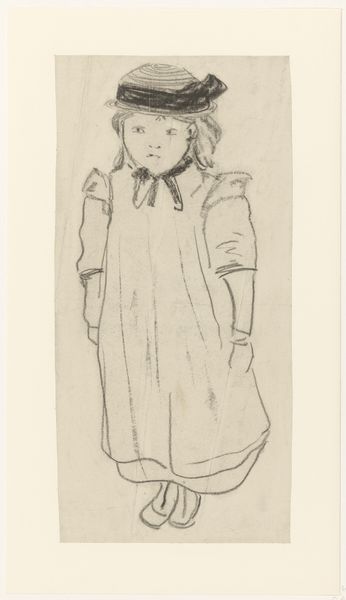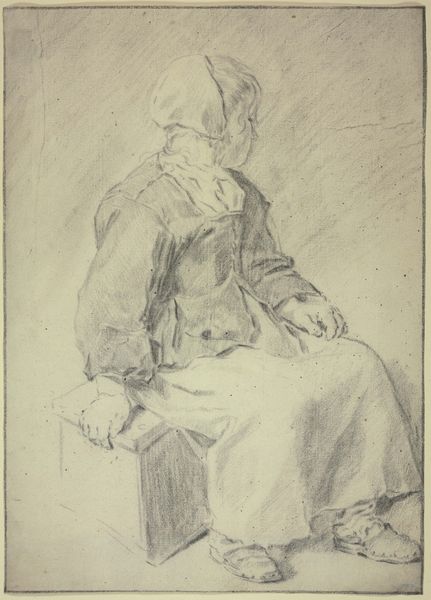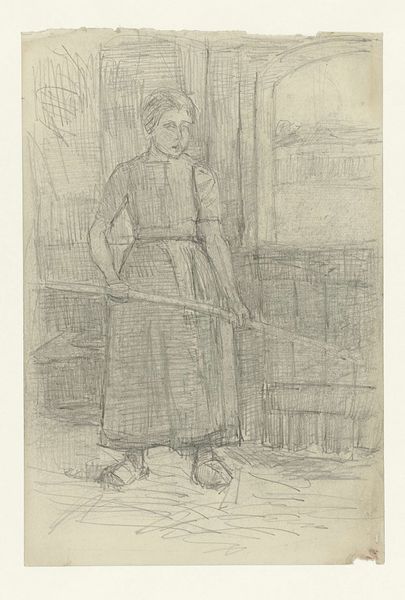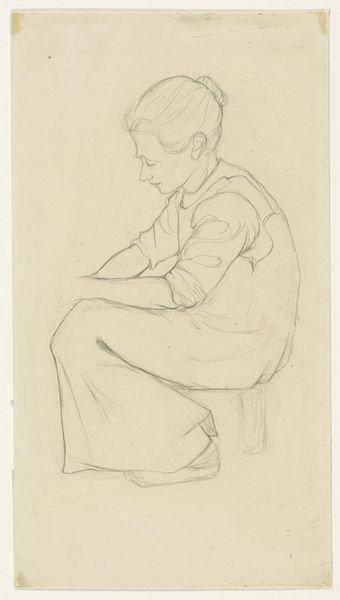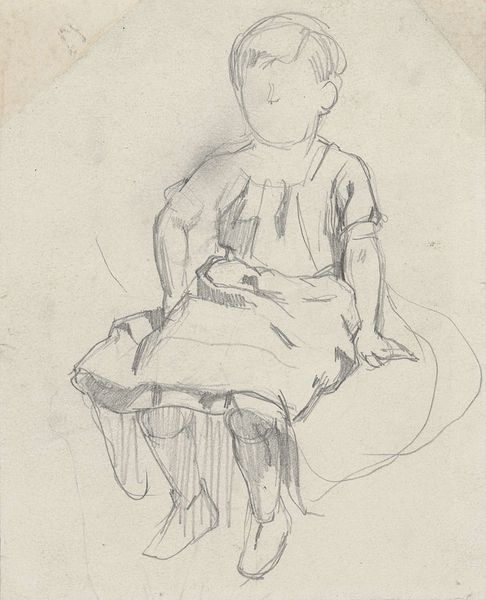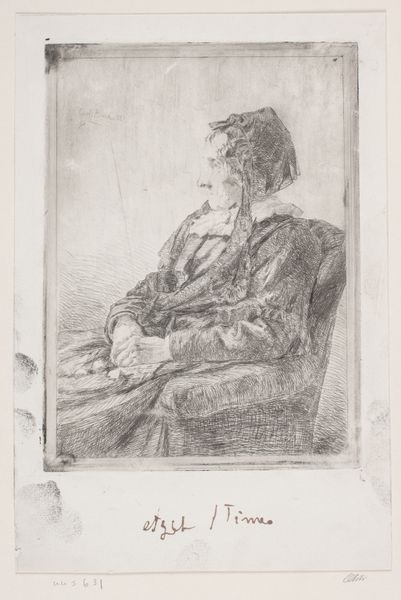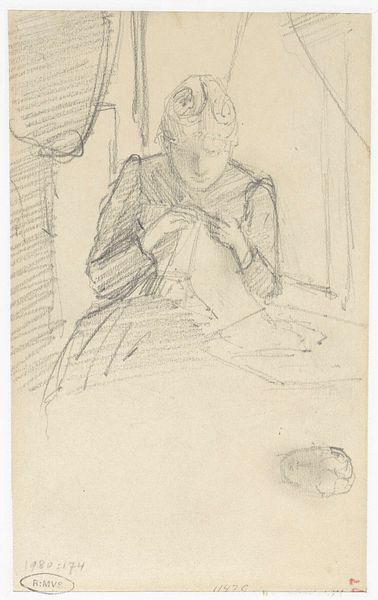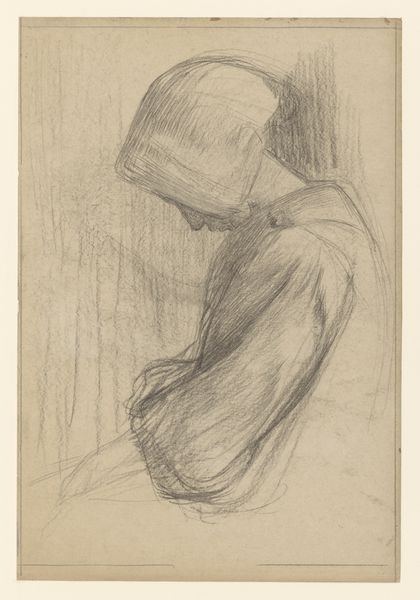
drawing, paper, pencil
#
portrait
#
drawing
#
figuration
#
paper
#
pencil
#
genre-painting
#
realism
Dimensions: height 460 mm, width 283 mm
Copyright: Rijks Museum: Open Domain
Curator: At first glance, it feels almost melancholic. The soft lines, the muted tones...it evokes a sense of quiet solitude. Editor: Indeed. What we have here is a pencil drawing by Jan Veth, likely created between 1874 and 1925. It's titled "Drinkende jongen," which translates to "Drinking Boy," now held in the Rijksmuseum. Veth was well known for his portraits and genre scenes rendered with an eye for Realism. Curator: The pose is fascinating; there's an almost timeless quality to the boy holding the bowl to his lips. Is he weary, perhaps? Or simply taking a moment of respite? This intimate depiction, capturing an ordinary moment, feels rich in deeper, perhaps universal, implications about daily life. Editor: These kinds of genre paintings were gaining traction around that time, capturing working class or peasant folk during every day moments. It was an attempt at depicting the reality of that segment of the Dutch population and, by virtue of displaying these at salons, helped put forth the argument for according dignity and importance to those members of the community. Curator: Veth captures an inherent humanity. You sense a connection with the boy. Note the texture in the strokes used to depict his form – the roughness of the fabric against his skin. The boy could symbolize humility. Editor: Precisely. The institutionalization of the salon system during the late 1800s definitely bolstered career trajectories of genre-specialized artists like Veth who embraced Realism. It certainly created a visual culture of empathy in how Dutch folk could identify with this section of the population during moments of rapid urbanization. Curator: It is really fascinating how the image manages to encapsulate feelings about larger issues. Thank you. Editor: It has been my pleasure!
Comments
No comments
Be the first to comment and join the conversation on the ultimate creative platform.

